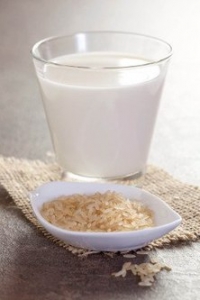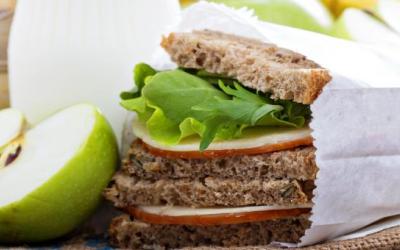The Russians no longer have enough money for food

Recently, BLOOMBERG named RUSSIA as one of the "hot spots" on the world map due to the sharp rise in food prices.
Inflation could lead to protests, the agency believes. The Ministry of Economic Development immediately hastened to call these statements speculative. But, according to official statistics, prices do increase quickly. For the year in Russia, the cost of products increased by 8.2%. This is 4 times more than last year. And 7.5 times higher than food inflation in the European Union.
Reality given in price tags
Since last summer, world prices for agricultural products have increased by 20-30%. “In Europe, this translates into food growth by 1% per year, while in our country it is 7-8%. Because the EU has had low inflation for decades, consumers and producers know that prices will fall again next year. And if inflation expectations are high, then external shocks can lead to inflationary surges,” explains Marcel Salikhov, DIRECTOR of the Center for Economic Expertise at the HSE Institute of Energy and Finance.
In addition, in Russia there is a second reason for the rise in price of products - the devaluation of the ruble from 61 rubles per DOLLAR at the beginning of last year to 74 rubles now. On the one hand, the devaluation made the prices of our products even more attractive on the world market. On the other hand, due to the growth of the dollar, the costs of domestic production begin to grow: the costs of fertilizers, protective equipment, veterinary drugs, amino acids, seeds, and equipment are increasing. As a result, even those products that are not traded on the foreign market become more expensive.
Alternative estimates of food inflation to Rosstat are even higher. "Romir" believes that last year the products went up by 11%. The company monitors prices not on the shelves, but in checks. And it takes into account not the basic, but the real basket of products, which is formed upon purchases. According to the OFD Platform, which transfers checks from online cash registers to the tax office, actual inflation for a number of positions is also significantly higher than Rosstat takes into account. For example, sunflower oil increased in price by 36% over the year, not 26%, wheat FLOUR - by 27%, not 14%, Darnitsa bread - by 12%.
“In 2020, cucumbers and tomatoes were the most expensive, and in general, prices for bulk categories grew almost every month. In addition, in the first weeks of the pandemic, an increase in prices for toilet paper was noted, ”Romir adds.
In autumn, SUGAR and sunflower oil began to rise sharply in price. So, sugar added 65% in price in a year. The government decided to act with administrative measures and in December agreed with retailers and manufacturers to limit prices. But in February, the situation got out of control again - chicken and eggs began to rise in price. Now the prices are limited for them.
On average, in 2020, the share of spending by Russians on FMCG goods, that is, everyday demand, reached 47% of the family budget, follows from Romir's data.
The OFD Platform company also recorded a larger increase in prices for a number of positions than Rosstat.
According to the feelings of the Russians, annual inflation in 2020 has completely accelerated to 12%. “In life, each of us has our own personal consumer basket, and it is very different from the average for the country. The problem of a big difference between the feeling of inflation and statistics exists in all countries,” says Natalia Orlova, chief economist, HEAD of the macroeconomic analysis center at Alfa-Bank.
Not only buckwheat
Over the past 10 years, even according to the conservative estimate of Rosstat, individual products on the shelves have risen in price up to three times, that is, they have grown in price three times faster than the average level.
More than the shares of "Gazprom", and more than the Moscow real estate, curd cheeses have grown in price. According to Rosstat, they have risen in price by 2.7 times. In the top of the most expensive products, in principle, there is a lot of “milk”: ice cream and butter (price increase by 2.6 times), yogurt (2.4 times), condensed MILK (2.2).
In the segment of dairy products, the share of imports is still high (9.8%), and in addition, over the past 10 years, farms have been crowding out large producers.
“Dairy complexes are beautiful, modern, there are thoroughbred animals and excellent milk yields that Soviet-era collective and state farm cows could not dream of, but milk cannot be produced cheaply,” says Natalya Shagaida, director of the RANEPA Center for Agricultural Policy.
In 10 years, the price of fish has risen by 2–2.5 times, and all of them: both salmon and herring. Fish is produced in Russia, but is actively sold for EXPORT, so its prices are determined by the external market, in foreign currency.
Finally, prices for imported goods also increased: tea, coffee, chocolate, nuts, OLIVE OIL. In 2010, the dollar fluctuated around 30 rubles. Now it is more than 70 rubles. The price of vodka also rose along with excise taxes.
In the top of the most expensive products there is neither buckwheat nor sugar. Although it was these names that most often sounded in the news in connection with the rise in price and panic buying. The fact is that prices for them change in waves: then they fall sharply, then they rise sharply. Since 2010, the price of buckwheat first fell by half, then rose, fell again by a third and rose again. In just 10 years
buckwheat added 33% in price, which is significantly below the average. Sugar has risen in price by 32%. Sunflower oil - by 78%.The most surprising thing is that several products have even fallen in price in 10 years. It's potatoes. It costs 2% less than in 2010.
Prices for onions have not changed much. And white cabbage has lost almost a third in price - as much as 28%.
It's all about the high competition in this market segment. “Citizens' farms are the main producers of vegetables and potatoes. Farmers are very active. Crop products in Russia are cheap and absolutely competitive in price. If you do not take greenhouse vegetables, of course, ”explains Natalia Shagaida.
Breakthrough is unaffordable
Over the past 10 years, food prices have increased by 86%. Whereas the real disposable income of citizens not only did not grow, but even fell below the level of 2010, based on Rosstat data. Russians have been hit hard by the effects of the covid-19 pandemic . 69% of citizens are forced to save, indicate in NielsenIQ.
“In 2015-2016, food inflation was much higher. Nevertheless, it seems that then people reacted more calmly to it than they do now. The sharpness of the issue of rising prices is not so much the rise in price of goods, but the fall in income,” notes Natalia Shagaida.
The hardest hit are the poorest.
They spend on food not a third, like average Russians, but more than half of the budget - 52%, Rosstat reported at the end of 2019.
“You can't help everyone, but you can help the poorest sections of the population,” says economist Ivan Starikov, Russia's deputy economy minister from 1995-2000. He has long proposed introducing a system of targeted food certificates for those most in need.
According to my estimates, there are about 30 million such people. If we allocate 5,000 rubles a month per person on average, it will take 1.8 trillion rubles a year. But this will effectively help the poorest, create a guaranteed demand for products of domestic producers, for example, pork, chicken, which are experiencing a serious demand constraint. This, in the end, will improve the diet of people, which will affect HEALTH,” says Starikov.
However, the government has so far consistently refused to introduce food certificates. If at the international level food security is ensuring the availability of quality food for the population, then in Russia food security is understood primarily as the maximum possible self-sufficiency, independence from other countries, the RANEPA study says.
At the same time, funds are still being spent to support domestic producers. In 2014, Russia announced the start of an active import substitution policy and introduced food counter-sanctions, banning the import of MEAT, fish, dairy products, fruits and vegetables into Russia from most European countries and the United States . Polish apples and parmesan that violated the border were dealt with by a bulldozer.
From 2015 to 2020, the government allocated almost 3 trillion rubles to import substitution projects. About 2.2 trillion more were spent by the Russians, overpaying for more expensive domestic products compared to imports, economists at RANEPA and CEFIR calculated.
As a result, "agriculture has made an incredible breakthrough, which was hard to imagine," President Vladimir Putin shared his successes two years ago . Over 10 years, food exports from Russia have grown 3.4 times, to almost 30 billion US dollars.
Nevertheless, products, even grain, 99% grown in Russia, continued to rise in price.
The current government measures - an attempt to contain prices by administrative means, the introduction of export duties and (in the future) an increase in the key rate - are called by Starikov and other experts as short-term and ineffective.
“If you fight inflation with administrative methods, it can either accelerate or there will be a deficit. Because it will become unprofitable for manufacturers to deal with these goods. And the rate hike has a negative impact on the economy,” says Marcel Salikhov. In the long term, inflation must be fought through the creation of efficient consumer markets and the development of competition, the expert concludes.
“An income support measure for vulnerable segments of the population is considered the measure that distorts the market the least and does not have long-term negative aspects from all sides. Price restrictions, export restrictions are measures with a long-term negative effect,” Natalia Shagaida agrees.
In addition, the abolition of counter-sanctions could make some goods more accessible: fruits, cheese. In 2014–2016, domestic consumers overpaid for food by 10–14% compared to the external market. Since then, prices have converged, but even now Russians are overpaying for products, the expert believes.
Antonina Asanova, "New"
Read together with it:
- An HSE expert reported on the "evolution of inequality" in access to healthcare.An HSE researcher analyzed Russians' access to healthcare over a ten-year period. In 2021, the influence of financial factors became noticeable for the first time: low income reduces the likelihood of visiting a DOCTOR.Over the ten years from 2011 to 2021, the number of Russians requiring medical care but not receiving it remained virtually unchanged, according to a study by Lyudmila Zasimova, hea...
- The IEA sees a risk of a decline in oil production in Russia due to sanctions.The IEA sees a risk of reduced oil production in RUSSIA due to US sanctions , but maintains its production forecast. According to the IEA, Russian oil exports will remain unchanged.There is a "significant downside risk" to Russia's oil production forecast due to US sanctions, the International Energy Agency (IEA) said in a report.BLOOMBERG . The agency's experts believe that the latest US sanction...
- UniCredit заявил о галактических усилиях из-за санкций против РоссииUniCredit старается не нарушить «более 15 тыс. санкций», а также не «совершать ошибки», которые позволят изъять его активы в России, заявил гендиректор. После начала военной операции банк начал рассматривать возможность ухода Итальянский банк UniCredit прилагает «галактические усилия», пытаясь соблюсти международные санкции в отношении своего российского подразделения. Об этом заявил генеральный д...
- "Коллективы АПК способны решать любые задачи даже в непростых условиях". Назаров о заслугах сельхозпроизводителейЮрий Назаров 13 ноября, Минск. Обеспечение продовольственной безопасности страны - большое достижение трудовых коллективов аграриев, отметил управляющий делами Президента Республики Беларусь Юрий Назаров на торжественной церемонии награждения государственными и иными наградами работников АПК Управления делами Президента Республики Беларусь, передает корреспондент БЕЛТА. Торжественная церемония наг...




























































